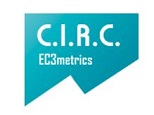La lectura medieval de las auctoritates: itinerario de una liberación
DOI:
https://doi.org/10.53439/stdfyt32.16.2013.243-254Keywords:
compilator, commentator, auctor, auctoriatates, evolutionAbstract
This work is divided into four parts. In the first one, the medieval distinction between scriptor, compilator, commentator and auctor is exemplified along with their implicit hierarchical organization to arrive at the etymology and definition of auctoritas as guiding principle in a given matter or subject. The second part deals with the use of the Auctoritates from the late antiquity –both theological and philosophical– in the Early Middle Ages. Later, the description centers on philosophical texts and shows the gradual achievement of critical awareness, which reaches its explicit status with Peter Abelard. The third part focuses on the stage of gradual achievement of independence in which the Auctoritates are no longer conceived unconditionally as far as indisputable statements but as testimonies. Lastly, and as a conclusion, it is noted that the different medieval attitudes towards the Auctoritates suggest ways of reading that can be traced even in current times within the university sphere.

















